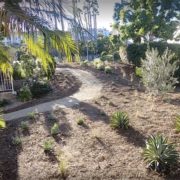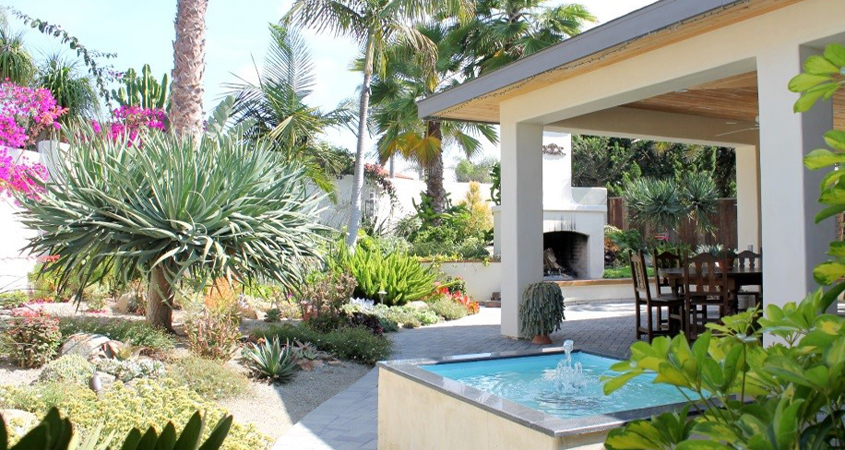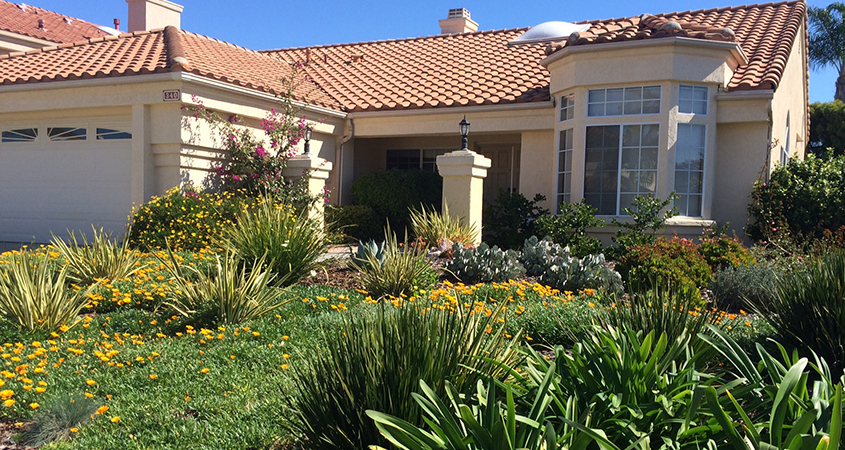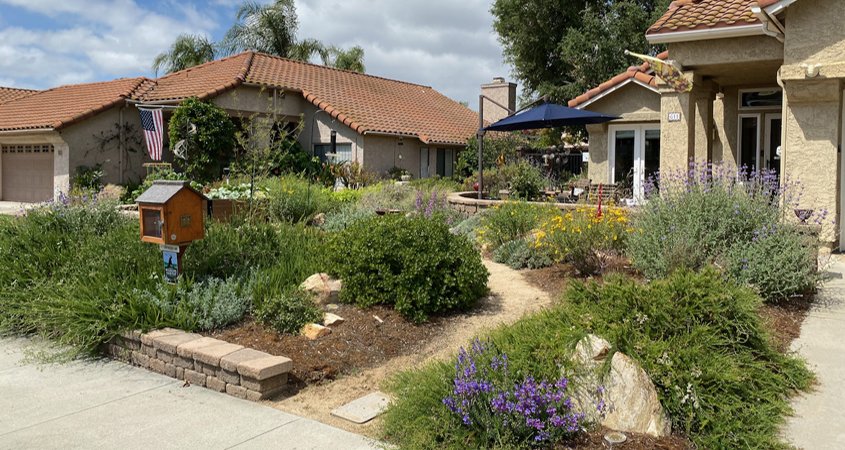Lake San Marcos HOA Landscape Makeovers Benefit From County Watershed Restoration Program
Lake San Marcos area homeowners associations are conserving water and helping restore the area’s watershed with support from the County of San Diego’s Watershed Rebate program. The rebate program is part of the County’s Watershed Protection Program.
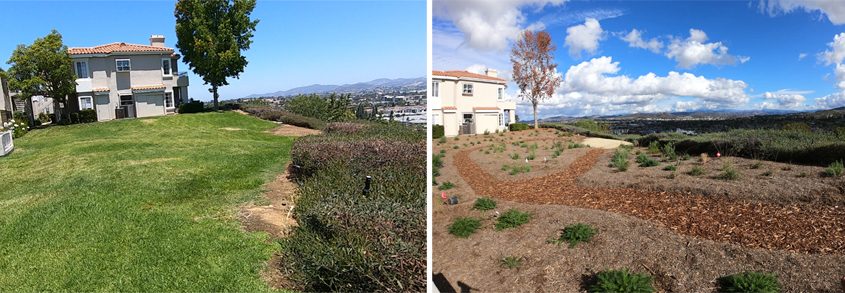
An example of the transformation of the Panorama HOA landscaping. Photos: Vallecitos Water District
Through a partnership between the program and the San Diego County Water Authority, residences and businesses in unincorporated areas of San Diego County are eligible for enhanced water-use efficiency rebates. The Waterscape Rebate Program saves money for residential, commercial, and agricultural customers who make landscape upgrades to improve the region’s climate resilience and reduce the flow of pollutants into waterways.
The Panorama HOA in Lake San Marcos is one of six HOAs in the Vallecitos Water District participating in the program. The project is featured in a new video produced by Vallecitos.
Partnership working to meet drought challenges
“While droughts are cyclical, now they’re hotter and drier and lasting a lot longer,” said Joni German, water resources specialist at the Water Authority. “The Water Authority looks to our partners like the County of San Diego’s Watershed Protection Program to help us meet these challenges.”
“This project here in Lake San Marcos is a great example of a successful turf conversion project, supported by multiple agencies through the Landscape Optimization Service, said German. “Panorama HOA removed 30,000 square feet of thirsty turf and replaced it with sustainable landscaping, including 14,000 square feet of native landscape.”
Multiple benefits from HOA landscape makeovers
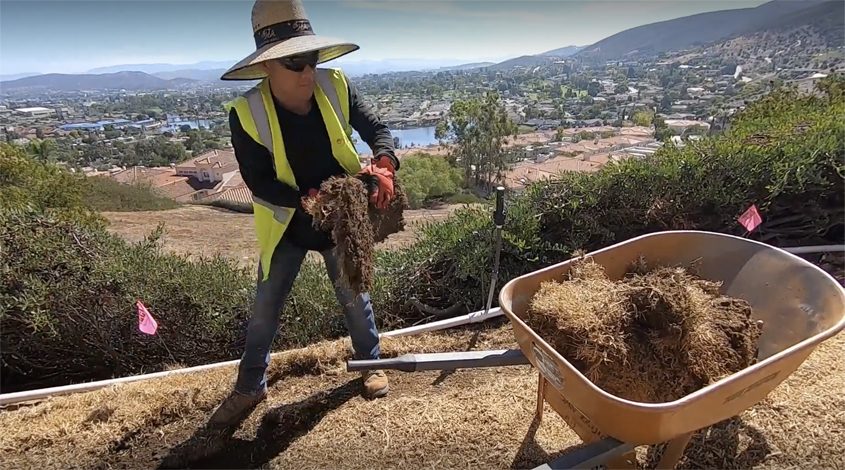
Removing turf yields multiple benefits including water conservation, watershed protection, and potential cost savings. Photo: Vallecitos Water District
Sustainable landscapes produce multiple benefits, which include reducing water use, enhancing habitat, increasing stormwater retention, and decreasing runoff.
To make applying for rebates easier for large landscapes, the County created the Landscape Optimization Service (LOS), a unique technical assistance program for large-scale landscaping projects. The program helps applicants with large landscapes, such as HOAs and commercial properties, to navigate the requirements, overcome any barriers, and maximize their rebate eligibility.
“It’s a service offered free to large landscapes. It helps them get the most from the rebates that are available,” said Jamie Milani, land use planner for the Watershed Protection Program. “Throughout the process, we are always here for our customers. If there’s ever any challenges with the rebate application process, we’re here to help.”
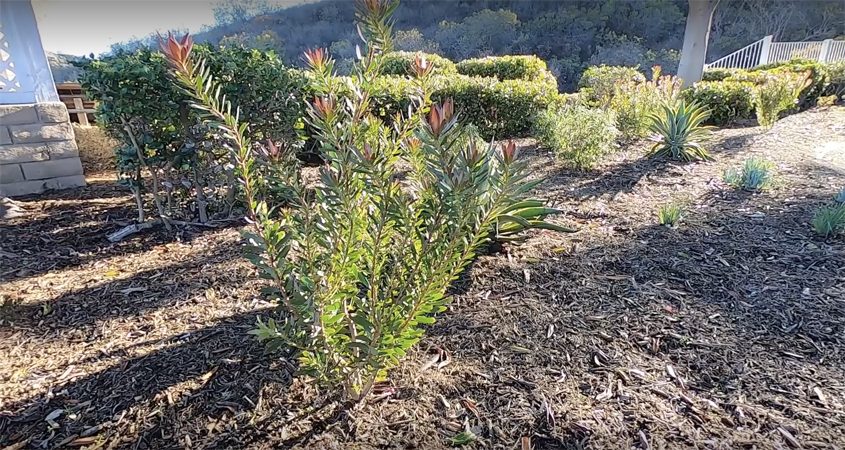
The new landscaping uses California native plants, which are eligible for an additional rebate. Photo: Vallecitos Water District
LOS staff analyzes estimated water and cost savings, including anticipated rebate totals, which helps decision-makers justify the investment with an understanding of how quickly the project will pay for itself. The program also offers discounted landscape design services to participants.
Rebate amounts can vary. Multiple rebates can be stacked together, including $3 per square foot for turf replacement, $60 per smart controller station, $65 per rain barrel, and up to $450 per cistern. The County program also offers $1 per square foot for landscapes planted with California native plants.
Positive feedback from Panorama HOA on program participation
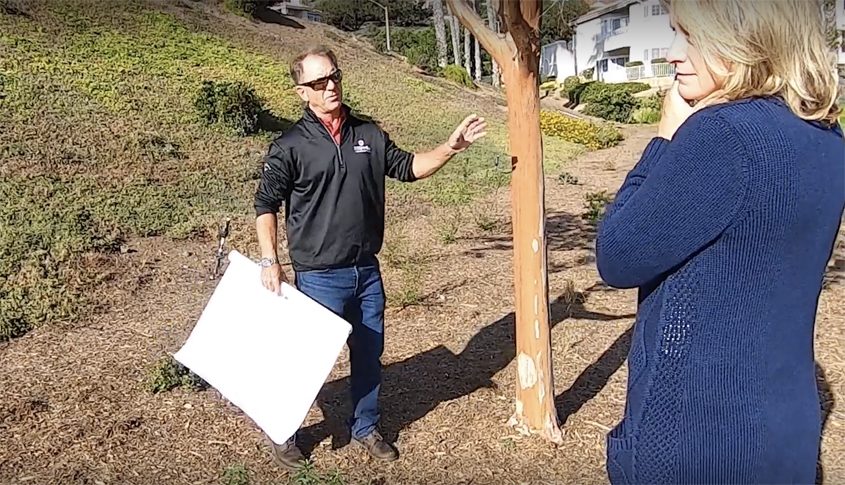
Jack Rush, vice president of operations for O’Connell Landscape Maintenance, discusses the makeover plan with Panorama HOA President Amber Rugghanti. Photo: Vallecitos Water District
Panorama HOA President Amber Ragghanti said members decided to participate in the program due to its landscaping aging out and the opportunity to secure assistance from the program, along with the rebates.
“The residents at Panorama were really happy with the process, especially because there was no cost,” said Ragghanti. “A lot of the people living here are also concerned about saving water.”
Ragghanti encourages other qualified HOAs to look into the program. “It’s been such a benefit. It’s been easy. The whole process has been a lot smoother than I thought it would be. I would recommend it to anybody.”
Water customers in unincorporated San Diego County can determine their eligibility at: WatershedRebates. More information on the Landscape Optimization Service can be found here.
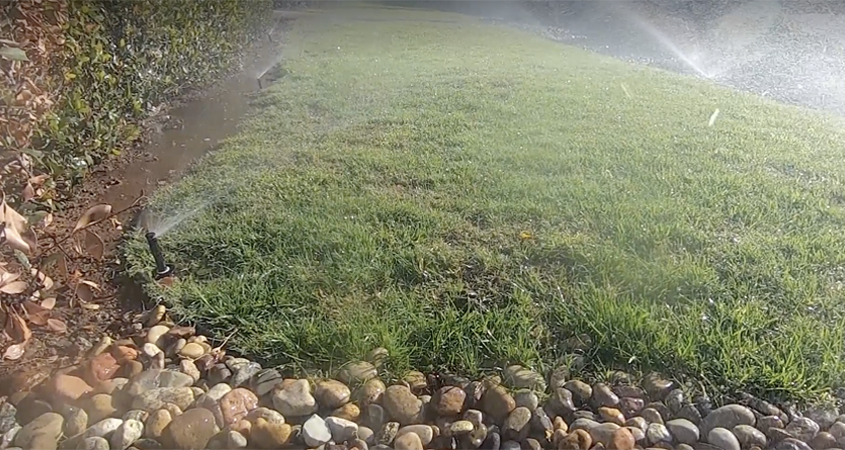
When irrigation systems overflow from landscaping, runoff may carry pollutants like pesticides, herbicides, and fertilizers into the storm drain system. Photo: Vallecitos Water District
The Waterscape Rebate Program helps protect local waterways by reducing pollutants that enter storm drains. When irrigation systems overflow from landscaping, runoff may carry pollutants like pesticides, herbicides, and fertilizers into the storm drain system. Reducing turf helps reduce irrigation use and runoff.
(Editors Note: Story updated March 22, 2023. The Vallecitos Water District is one of the San Diego County Water Authority’s 24 member agencies that deliver water across the metropolitan San Diego region.)

